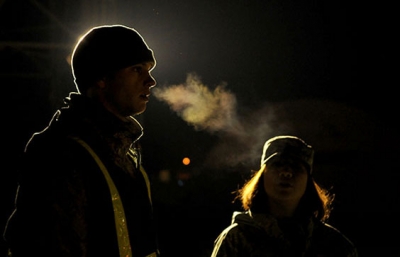
Have you ever seen your own breath? If you are from the cold climes, or if you have visited such places during one of those vacations, you might have encountered the phenomenon. Even if you haven’t been to such places yourself, you might have seen the breath of sports stars and adventure seekers on TV and in photographs when they breathe out after intense efforts in cold climates.
Moisture matters
While people are quick to see the role of temperature in this spectacle, the equally important role played by moisture doesn’t seem to be that obvious. Since our bodies contain nearly 70% water, air in our lungs is saturated with water vapour that is at the same temperature as our bodies, typically 37 degrees Celsius.
When a person lets out this warm, saturated breath on a cold day, the air outside rapidly reduces the temperature of the exhaled air. As cold air cannot hold the same amount of moisture as warm air, the combination reaches dew point briefly and is saturated with water vapour.
Dew point and beyond
When cooled beyond dew point condensation takes place and the water vapour turns into liquid water. The cloud of mist that we see fleetingly when breathing out in cold weather is the liquid form of the breath as minuscule drops of water.
Thus, a combination of both temperature and humidity is required to see your breath. Atmospheric moisture and temperature together create the conditions that allow us to make breath clouds and have fun with it.
Picture Credit : Google




